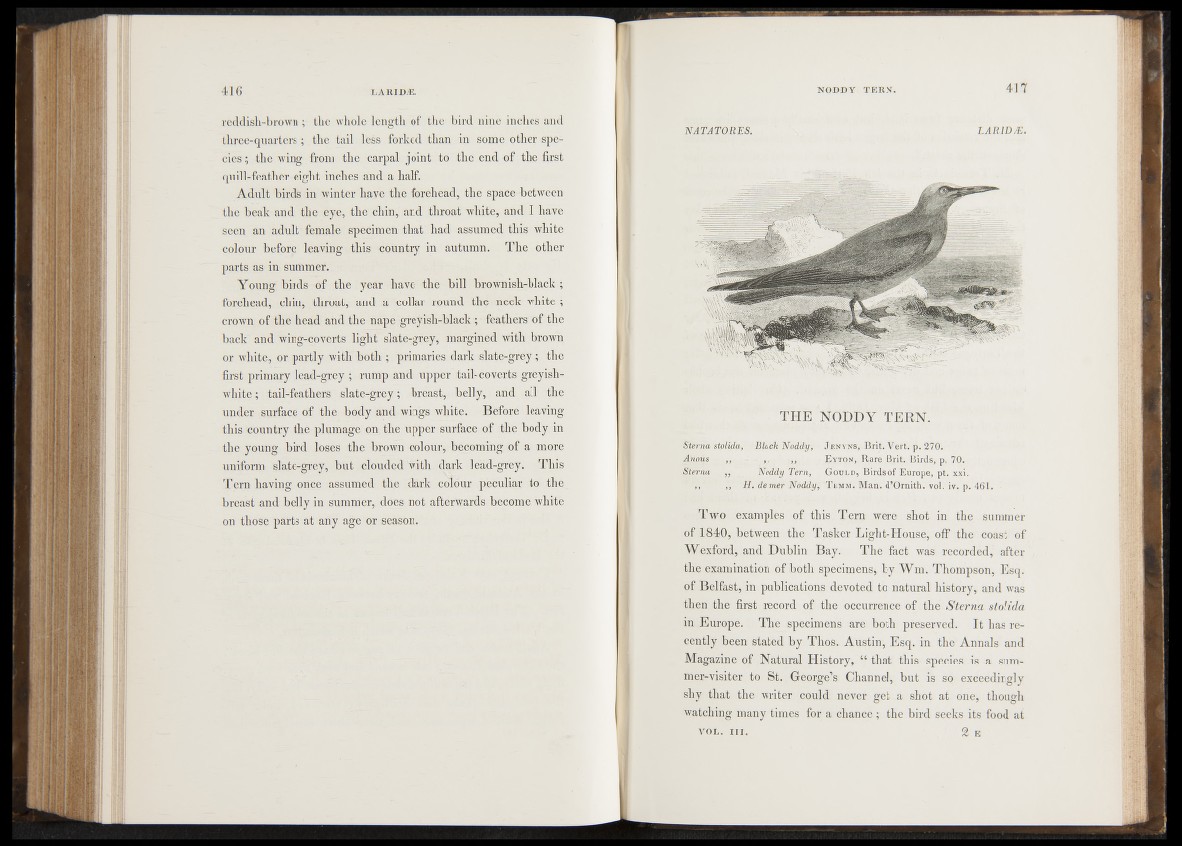
reddish-brown ;• the whole length of the bird nine inches and
three-quartersthe tail less forked than in some other-species;
the wing from the carpal joint to the end of the-first
quill-feather eight inehes and a half.
Adult birds in winter have the forehead, the space-hetWeeh
the beak and the eye, the?ohin, and throat white, and I have
seeR an adnlt female specimen tKaV had assumed this ’ white
colour before leaving this country in autumn. The other
parts as in- summer.
Young! birds- of the ; year have the bill: brownish^black ;
forehead, chin, throat, and» a collar .round the r neck white,;
crown, of the head and the - nape 'grayish-blacky;;; feafhers'~of'the
back' and wrng-cpverts light slate^grey, margined with brow®
or white, Or partly wittTboth ; primaries dark slate-grey ; the
first primary lead-grey ; rump and upper taibcnsferts greyish-
white ; tail-feathers' slate-grey; < breast,-belly, and all* the
under surface of thpnb#ly and-wings white. Before* leaving
this country the plumage on; the upper surface of tire’body in
the young bird loses -thegBsrown colour, becoming Wfa--» more
uniform slate-grey, but clouded'With dark lead-gaby. This
Tern- having onc^ assumed the dark peculiar to the,
breast and belly in summer, dees not afterwards become: whiK
on those parts at any age or season.
NATATORES. LAR1DAE.
T H E NODDY T E R N .
-Sterna, ‘stplffig,’ Black Noddy, Jexyns, BiituVert. p. 270v
Anpüs „ ~ - ,, EYTON,.Rare Brit. Bijsdsjp, 70.
Sterna JjjRQwtgfy Tern, SmrLD, Birds of Europe, pt. xxi.
,, II. de nier Noddy^'Tkwm. Man. d’Ornith. vol. iv. p. 461. 5
• - Two . exampfeS'kofi this. Tern were shot-tin the summer
of 4840,^etw.een the Tasker Light-HouSe, off the coast of
Wexfordj and Dublin Bay. The fact was recorded, after
the examination of both specimens* by Wm. Thompson, Esq.
of Belfast, in publications devoted to natural history, and was
then the first record of ?the occurrence» of the Sterna stolida
in ^Europe. The^. specimens are both preserved. I t has re-
©ently^epn stated by Thosv Austin, Esq. in the Annals and
Magazine o f ;Natural History, “ that this species is a sum-
merTvisiter to St. George’s Channel, but is so exceedingly
shy that- th e 1 writer could never get a shot at one, though
watching many times for a chance; the bird seeks its food at
VOL. I I I . 2 E